#House of Anjou
Explore tagged Tumblr posts
Text
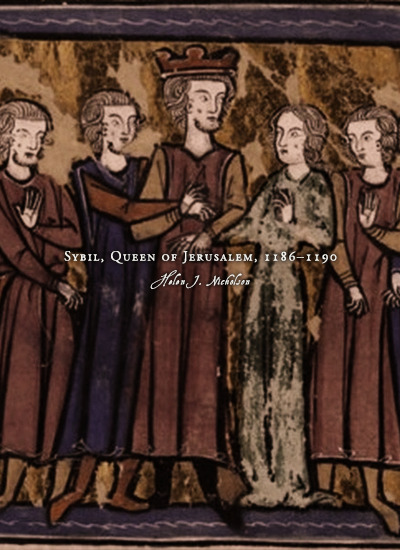


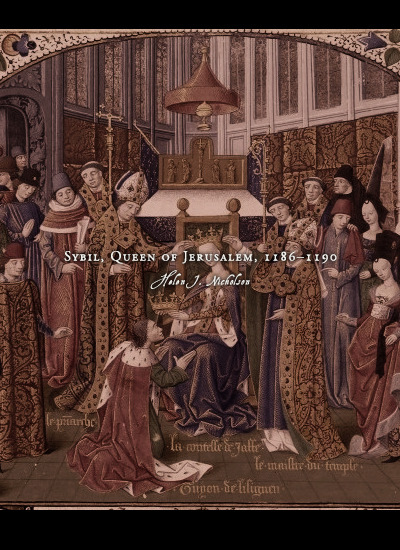


Favorite History Books || Sybil, Queen of Jerusalem, 1186–1190 by Helen J. Nicholson ★★★★☆
As a child, Sybil’s future prospects appeared excellent: as the eldest child of King Amaury of Jerusalem and as a member of the dynasty that claimed descent from Godfrey de Bouillon and the other heroes of the First Crusade, we might expect that she would have been an attractive marriage prospect. Yet European noblemen did not queue up to seek her hand. One reason for this might have been that commanding the defence of the kingdom of Jerusalem in the face of aggressive Muslim expansionism was a daunting prospect for any warrior, no matter how ambitious. Moreover, as her brother Baldwin’s illness became generally known in Europe, Sybil’s potential husbands may have wondered whether she and her children would be similarly afflicted. In addition, as her brother Baldwin and his council made clear to Philip of Alsace in autumn 1177, outside aid was unwelcome in the kingdom except on the terms they dictated. Robert VI of Béthune, Philip of Alsace’s candidate for Sybil’s hand, might have made a more effective count of Jaffa and Ascalon, regent of the kingdom and king consort than Guy de Lusignan, but Baldwin – aged only sixteen at the time of Count Philip’s crusade – preferred to marry his sister to a man he knew. If King Baldwin IV had supported his elder sister as the heir who – given that Baldwin V was very young and in uncertain health – would almost certainly inherit the kingdom, it might have been possible for Sybil to unite the nobles of the kingdom behind her as her brother had done. But his contradictory and changing policies left her rights of inheritance unclear and the nobles of the kingdom divided. He married her to one of his household knights, then attempted to divorce them; he appointed her husband as procurator, then shortly afterwards deposed him and appointed her son as his co- ruler, and then appointed another procurator, then finally appointed two regents, one to care for the young king Baldwin V and the other to govern. If he made further arrangements for the succession after Baldwin V they were unworkable. By marrying his younger half-sister to a leading noble of the kingdom but forcing the bridegroom to surrender his inherited estates in return, King Baldwin IV ensured that both his sisters and their husbands and supporters had grievances against him. While his measures reduced any threat that he would be overthrown during his lifetime, they boded badly for the kingdom after the death of his immediate heir. Given the rivalries between the leading nobles of the kingdom and Saladin’s need to win a decisive victory over the Franks, no one could have prevented Saladin from taking Jerusalem and conquering most of Sybil’s kingdom; Sybil was doomed to failure as queen. Not only did she lose Jerusalem, but she also failed in the most fundamental function of a noblewoman: she failed to provide an heir for herself, as both her son Baldwin and her daughters died in childhood. On the other hand, in the face of disaster she did not abandon her kingdom and flee to Europe, nor did she retire to a religious house. Instead, she stayed in the crusader states and did all she could to oppose the invader. She tried to defend Ascalon, she remained in Jerusalem until it was surrendered to Saladin, she obtained her husband’s release from Saladin’s prison, and by accompanying him in the months that followed she gave him the authority to continue as king of Jerusalem. As husband of the eldest daughter of King Amaury of Jerusalem and as a crowned king, Guy had a stronger claim to royal authority than Conrad of Montferrat: crusaders from Europe rallied to him and the representatives of the Italian maritime cities supported him so that he could begin the fightback against Saladin which was continued by the Third Crusade and enabled the kingdom of Jerusalem to continue to exist until 1291. When Sybil died, Guy’s authority died with her; but she had ensured that her kingdom would not die, at least for another century.
#historyedit#litedit#sibylla of jerusalem#french history#medieval#asian history#european history#women's history#history#house of anjou#history books
70 notes
·
View notes
Text

Marguerite d'Anjou, Reine d'Angleterre (1430-1482).
#kingdom of england#margaret of anjou#queen consort#queen of england#house of lancaster#house of anjou#wars of the roses#royaume d'angleterre#maison d'anjou#maison de valois#full-length portrait#full length portrait#royalty
27 notes
·
View notes
Text
St Jadwiga of Anjou, the King of Poland – A guest post by Katarzyna Ogrodnik-Fujcik
Jadwiga as depicted by Jan Matejko. Imaginary portrait based on a series of drawings the artist made upon examining her resting place in 1187. The Freelance History Writer is pleased to welcome back Katarzyna Ogrodnik-Fujcik with an exclusive article on an exceptional woman from Polish medieval history. In January 1887, a group of scholars and artists explored the grave of Jadwiga [Hedwig] of…
#Elizabeth of Bosnia#Hedwig#House of Anjou#Jadwiga#Jan Matjko#King Casimir the Great#King Louis the Great#King of Poland#Ladislaus Jagiellonian#Medieval History#Piast dynasty#Polish history
2 notes
·
View notes
Text

23 March 1430: Marguerite d'Anjou is born at Lorraine, France. She later became Queen of England by marrying King Henry VI.
#house of lancaster#happy birthday to margaret of anjou#marguerite d'anjou#margaret of anjou#queen of england#house of anjou#plantagenet dynasty
4 notes
·
View notes
Text
Irish Coin Daily: Silver Farthing of John de Curcy, Lord of Ulster, (Second 'Anonymous' Coinage)
Date: c. 1195 John De Courcy, Lord of Ulster, Farthing, anonymous issue, Downpatrick Mint. Description: John de Courcy, (1177-1205), Farthing, Anonymous ‘St Patrick’ issue (c.1185-c.1205), Cross Potent with Crescents coinage, Farthing, Downpatrick mint. Weight: 0.32g References: Allen dies [this specimen not listed] Withers [not listed] SCBI Ulster 336, same obv. die; S 6227; DF 47 Edge…

View On WordPress
#+DE DVNO#+PATRICII#Angevin#coin#county down#downpatrick#House of Anjou#irish#irish hammered#irish hammered coinage#john de courcey#john de curcy#lord of ulster#medieval#northern ireland#Processional cross#Richard I#second anonymous coinage#Short cross potent#silver#ulster#Anglo-Norman#farthing#Ireland
0 notes
Text
i'm a history nerd with an interest in royal history, sooooo
i know that England & Scotland didn't became Great Britain/the United Kingdom till the end of the Stuart era, but i wanna focus on the houses of england and (except for house of denmark) only england
#english royal family#english royal history#royal history#house of wessex#king of england#kings of england#queens of england#queen of england#house of denmark#house of godwin#house of normandy#house of blois#house of anjou#house of plantagenet#house of york#house of lancaster#house of tudor#house wessex#house denmark#house godwin#house normandy#normandy#house plantagenet#plantagent#house york#house anjou#house tudor#house lancaster#tudors#history poll
1 note
·
View note
Text

Elizabeth of York, fashion character design, c. 1481.
#the wars of the roses#15th century#historical#medieval#british history#medieval england#art#illustration#sketch#edward iv#elizabeth woodville#elizabeth of york#henry vii#henry vi#margaret of anjou#margaret beaufort#isabel neville#richard iii#the white queen#the white princess#medieval fashion#historical fashion#character design#artists on tumblr#medieval costume#royals#house of york#plantagenets
485 notes
·
View notes
Text

Felipe V of Spain (!!)
#sketch#doodle#17th century#bourbon anjou#house of bourbon#spanish monarchy#philip v of spain#digital art#historical art#historical figures#him being judgy k#kinda#artists on tumblr#royal history#18th century
58 notes
·
View notes
Text
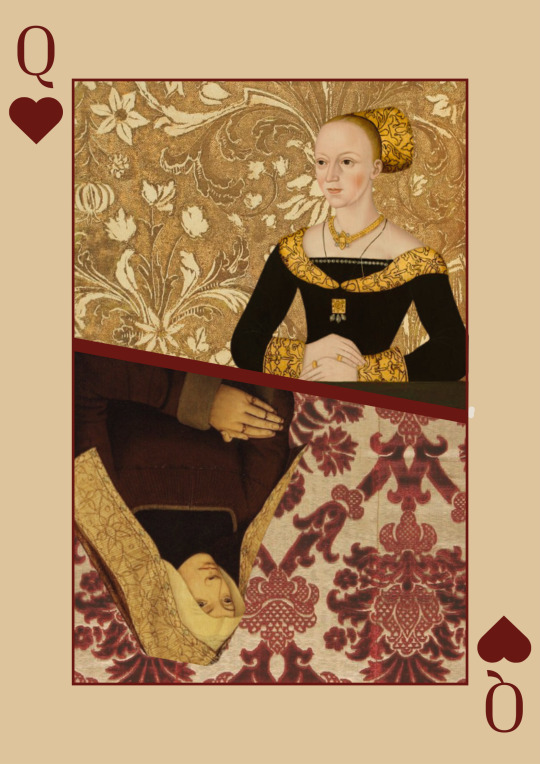
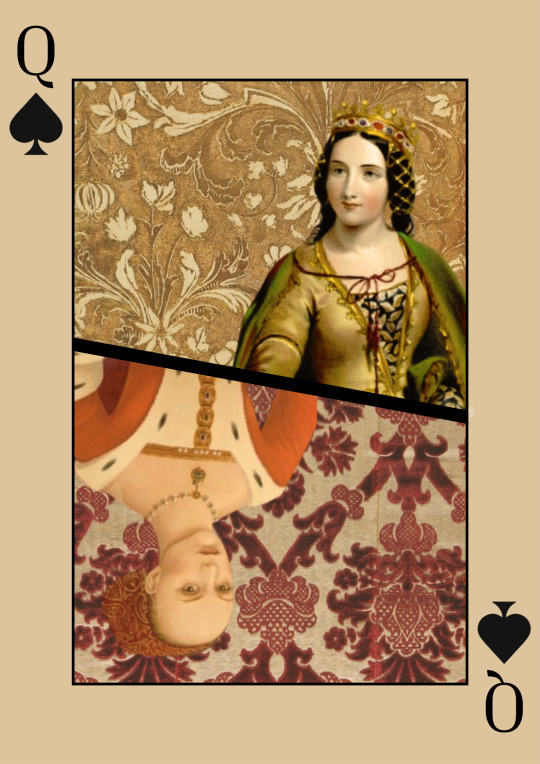
|| 𝐄𝐥𝐢𝐳𝐚𝐛𝐞𝐭𝐡 𝐖𝐨𝐨𝐝𝐯𝐢𝐥𝐥𝐞 & 𝐌𝐚𝐫𝐠𝐚𝐫𝐞𝐭 𝐁𝐞𝐚𝐮𝐟𝐨𝐫𝐭 ||
|| 𝐀𝐧𝐧𝐞 𝐍𝐞𝐯𝐢𝐥𝐥𝐞 & 𝐌𝐚𝐫𝐠𝐚𝐫𝐞𝐭 𝐨𝐟 𝐀𝐧𝐣𝐨𝐮 ||
#elizabeth woodville#margaret beaufort#anne neville#margaret of anjou#wars of the roses#house york#house lancaster#historyedit
146 notes
·
View notes
Text
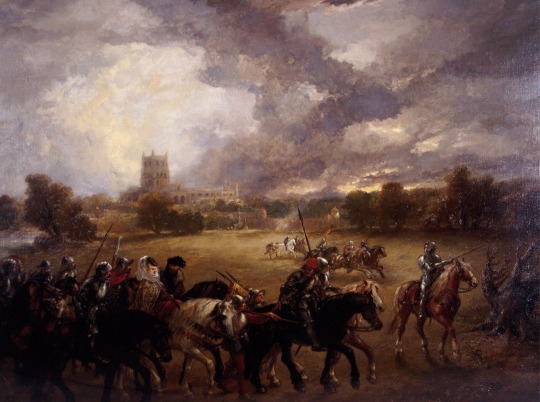
Margaret of Anjou Taken Prisoner after the Battle of Tewkesbury by John Gilbert
#battle of tewkesbury#wars of the roses#margaret of anjou#art#john gilbert#england#medieval#middle ages#tewkesbury abbey#house of york#house of lancaster#english#history#gloucestershire#europe#european#mediaeval#knights#knight#soldiers#palfrey#horses#sky#landscape#clouds#edward iv#edward of westminster#sir john gilbert
111 notes
·
View notes
Text

Thanks @hilda-dewitt for this great piece of work depicting Louis I of Anjou and Marie of Blois, great-grandparents of Margaret of Anjou. Louis I of Anjou was the founder of the Angevin cadet branch of the House of Valois, and Marie of Blois was the first of a series of powerful women in the House of Valois-Anjou.
I really found their story to be full of fun and drama. After King John II of France was taken prisoner in the Battle of Poitiers, Louis broke the Aragonese marriage contract arranged by his father to marry Marie, the daughter of one major claimant to the ducal throne of Brittany, neighboring his appanage of Anjou. His desire to meet his wife pushed him to end his hostage career in England prematurely on his own, and more or less led to the decision of John II to return to captivity, lol. While Marie's father fell in battle six months after John the Good's death in London, the couple remained close and intimate throughout their lives. Louis served as a leading military commander in his elder brother Charles V's reconquest of southwestern France during the second phase of the Hundred Years' War. He was also a loyal friend and protector of Bertrand du Guesclin, who fought for Marie's father before entering service for the Valois. However, due to his role in the 1378 tax revolts and his overambitious claim to the throne of Naples, Louis remained a controversial figure in France, and his past accomplishments were little appreciated. After Louis's death in the unsuccessful march to Naples, Marie continued their quest for the Neapolitan crown, and, after a tough fight against opposing claimants, secured for their seven-year-old son Louis II the County of Provence, which was in a personal union with the Kingdom of Naples. She acted as regent for Louis II during his minority, and arranged the marriage between him and Yolande of Aragon.
#Louis I of Anjou#Marie of Blois#hundred years war#medieval#fanart#historical fanart#french history#commission art#house of valois#margaret of anjou#Yolande of aragon
61 notes
·
View notes
Text










Women’s History Meme || Empresses (2/5) ↬ Catherine de Valois-Courtenay (before 15 April 1303 – October 1346)
The official Neapolitan investigation into Andrew of Hungary’s murder targeted Johanna’s closest supporters and left her isolated and vulnerable. Her aunt, Catherine of Valois, took advantage of that vulnerability to become the queen’s confidant in order to make certain that one of her sons would be Naples’s next king. At first, it appeared that this son would be Robert, the eldest of the Tarantini, who for a time seemed to be winning the competition between the Angevin princes for power and whom Johanna requested a papal dispensation to marry. Soon, however, Louis gained the upper hand, and Johanna’s requests for dispensations began to identify him as her intended. — From She-Wolf to Martyr: The Reign and Disputed Reputation of Johanna I of Naples by Elizabeth Casteen Of the many relatives who chose to avail themselves of the glittering social whirl of the capital, one stood out: Joanna’s aunt, Catherine of Valois, widow of Robert the Wise’s younger brother Philip, prince of Taranto. Catherine was Joanna’s mother’s older half-sister (both were fathered by Charles of Valois). Catherine had married Philip in 1313, when Philip was thirty-five and she just ten. Catherine was Philip’s second wife. He had divorced his first on a trumped-up charge of adultery after fifteen years of marriage and six children in order to wed Catherine, who had something he wanted. She was the sole heir to the title of empress of Constantinople. … Catherine was twenty-eight years old, recently widowed, and a force to be reckoned with when the newly orphaned Joanna and her sister, Maria, first knew her at the Castel Nuovo in 1331. Shrewd, highly intelligent, and vital, Catherine was supremely conscious of her exalted ancestry and wore her title of empress of Constantinople as though it were a rare gem of mythic origin. Even the death of her husband, Philip, in 1331 had not dissuaded her from persisting in her efforts to reclaim the Latin Empire for herself and her three young sons: Robert, Louis, and Philip. A series of shockingly inept leaders had left the Byzantine Empire vulnerable to attack from the west, and this state of affairs was well known in Italy. Moreover, Catherine was used to getting her way. — The Lady Queen: The Notorious Reign of Joanna I, Queen of Naples, Jerusalem, and Sicily by Nancy Goldstone
#women's history meme#historyedit#catherine of valois#house of valois#capetian house of anjou#medieval#french history#italian history#european history#women's history#history#nanshe's graphics
42 notes
·
View notes
Text

Portrait of Geoffrey V, Count of Anjou (1113-1151). Unknown artist.
#engraving#royaume de france#maison d'anjou#Maison de Gâtinais-Anjou#Maison de Gatinais Anjou#Maison de Château-Landon#comtes d'Anjou#comtes du Maine#comtes de Touraine#full length portrait#Geoffroy V d'Anjou#comte d'anjou#anjou#house of anjou#kingdom of france#full-length portrait#duc de normandie#house of plantagenet#Maison Plantagenêt#royalty
15 notes
·
View notes
Text
"The variety of accusations with Margaret [of Anjou] reveals the complexity of fifteenth-century anxieties about queenship and queenly authority. There was concern about dependence upon a foreign woman for a much needed heir to guarantee stability, fear of her potential to foster false heirs, fear of her potential to abuse her proximity to the king by drawing others close to the king at the expense of those who should have been his councilors, and fear of the potential for chaos and the subversion of right order in any daughter of Eve."
joanna laynesmith, "telling tales of adulterous queens in medieval england: from olympias of macedonia to elizabeth woodville."
#margaret of anjou#henry vi#wars of the roses#history#house of lancaster#house of york#women's history#royal history#english history#french history#medieval era#medieval history#middle ages#*quotes
41 notes
·
View notes
Text
As Chesterton said somewhere, one obvious moral superiority of medieval to either modern or ancient society, is that in the joust, the rich people beat the shit out of each other as an entertainment, rather than paying poor people (or keeping slaves) to get beat up for them. (Okay the high salaries of pro sports muddy this, of course, but those are people of poor background, whereas the team owners are from the business elite. In medieval Europe you’d see Clark Hunt and Rob Walton out on the gridiron getting traumatic brain injury.)
#salty amateur historian#of course it WAS probably a jousting head-injury that made henry viii bad even by angevin standards#(tudors are plantagenets are a branch of the house of anjou)
41 notes
·
View notes
Note
What do you feel about the house of york
I feel like it's a medieval dynasty that one a war. That's about it.
I also think that Richard Duke of York was nothing more than a jealous cousin that saw the perfect opportunity to climb the ladder and took it, justly paying the price. Edward IV's anger over his and his brother's death is understandable and so were his actions. Too bad that he didn't saw that the Duke of York's ruthless ambitions had trickled down to his sons Richard and George before they tried it with him. I think the Woodvilles were overtly greedy and took too much of the hand that fed them making the nobility hate them, and they also paid for it. I mean, arranging prestige marriages for every single Woodville? I get it, one of them was the Queen, but come on now, they clearly overplayed.
On the whole, I find this representation of the Yorks as this typical Good HeirsTM that took their rightful place on the throne and stepped up through harsh times that persists so much to this day lame and reductive. The truth of the matter is, they were never more just and GoodTM than the Lancasters. The Lancasters successfully organized a coup and sat the throne, the Yorks did the same, demonizing Henry VI and Queen Margaret of Anjou through propaganda as a freak and an overly ambitious femme fatale respectively, while casting their teenage son as a cruel bastard. All for defending fiercely what was by right theirs (we have Shakespeare to blame for that as well).
#wars of the roses#house york#house lancaster#edward iv#richard duke of york#george plantagenet#richard iii#Henry vi#margaret of anjou#edward of westminster#medieval warfare#medieval england#late middle ages
43 notes
·
View notes